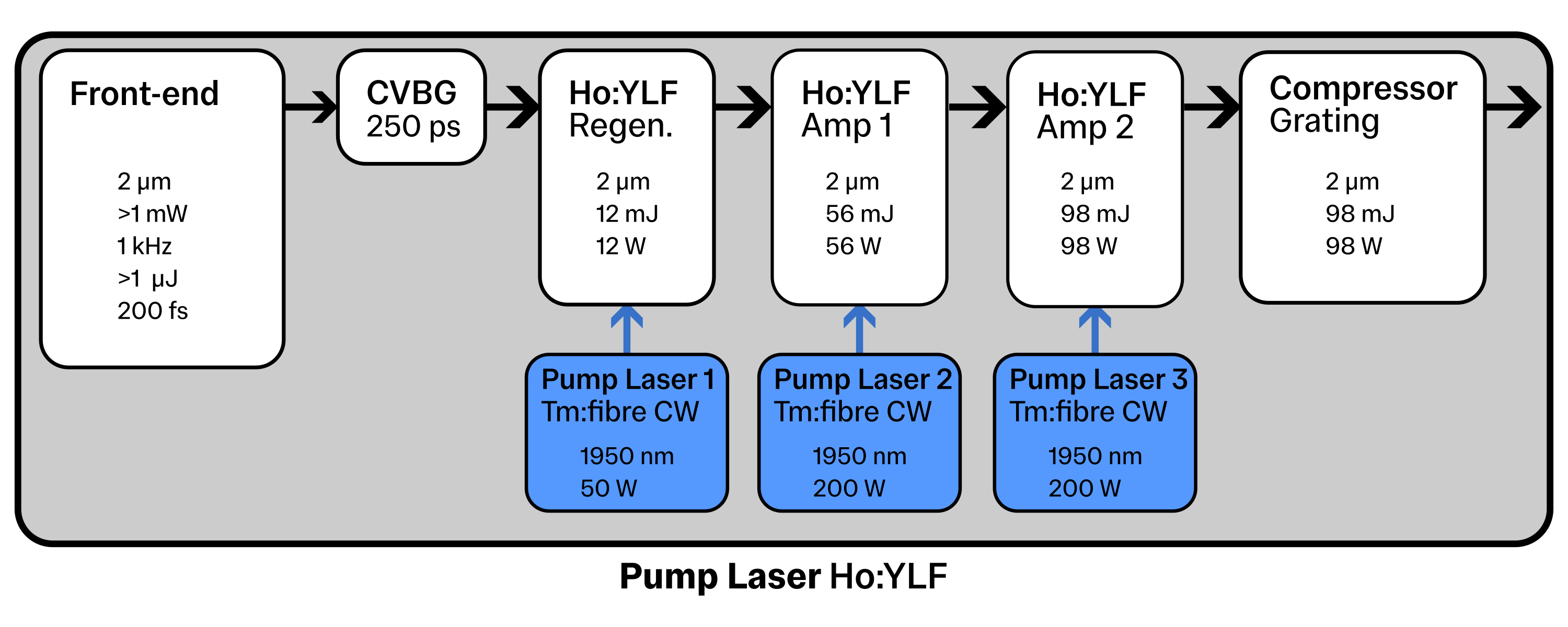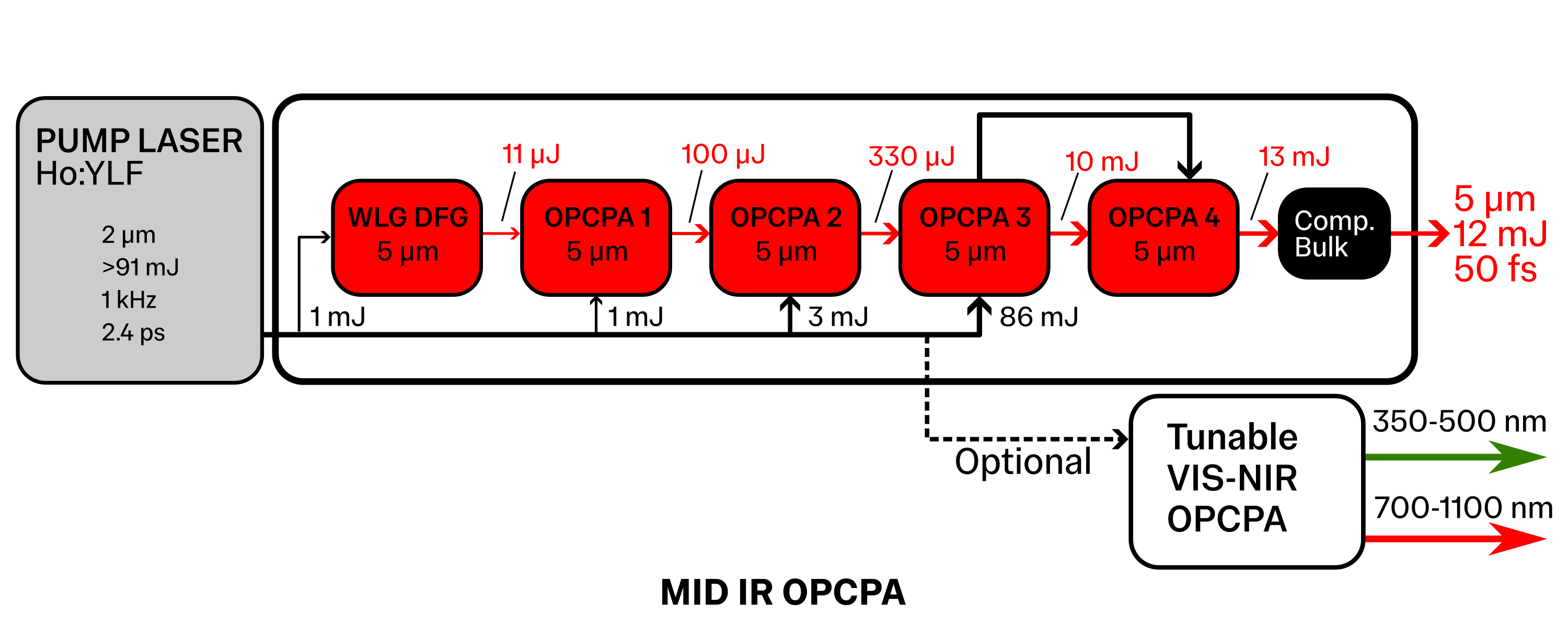LUXD is powered by a world unique MID-IR OPCPA laser system, developed by Class 5 Photonics.
The system consists of two main parts:
- High Energy Ho:YLF 2 µm pump laser
- High Energy Mid-IR OPCPA Laser
The basic parameters of each system can be seen below.
| Ho:YLF | OPCPA | |
|---|---|---|
| Wavelength | 2 μm | 5 μm |
| Pulse Energy | 93 mJ | 12 mJ |
| Pulse Length | 2.4 ps | 50 fs |
| Repetition rate | 1 kHz | 1 kHz |
Lasers
*Laser design in development and subject to change*
The OPCPA is pumped by a high energy 2 μm Holmium-doped Yttrium Lithium Fluoride (Ho:YLF) Chirped Pulse Amplification (CPA) pump laser.
This system begins of an initial down converting of the Ytterbium 1030 nm oscillator. The low pulses energy femtosecond pulses are stretched using Chirped Volume Bragg Gratings (CVBG) to 250 ps to form the seed of the amplifiers. This consists of one regenerative amp and two booster amps, each stage is pumped by continuous wave (CW) fibre coupled Thulium lasers. The amplifiers take the initial seed pulse energy of ~1 μJ and raise it to >98mJ or 100W . The high energy stretched pulses are then recompressed to 2.4 ps using a grating compressor.
A simplified diagram of the laser construction is shown below.

*Laser design in development and subject to change*
Access to >10 mJ of 5 μm 50 fs pulses is one of the reasons that make LUXD such a unique and exciting instrument, both for efficient driving of X-ray generation in the PXS but also as a source in its own right.
The Optical Parametric Chirped Pulse Amplification (OPCPA) laser is pumped by the >91 mJ 2 μm 2.4 ps pulses of the Ho:YLF pump laser. Initially a proportion of the pump used to drive White Light Generation (WLG) and the Difference Frequency Generation process to make the 5 μm seed pulses. The pulses are then amplified by four sequential OPCPA stages which bring the pulse energy from 11 μJ to >13 mJ. These high energy pulses are then compressed using a bulk media compression for a final high power 50 fs output.
It is possible to use a portion of the pump laser can also be used to drive a tunable Optical Parametric Amplifier (OPA) to generate visible (350-500 nm) and NIR (700-1100 nm) outputs which can serve as synchronised pump pulses for time resolved studies. The use of this stage will of course come at the cost of lowering the 5 μm output energy.
A simplified diagram of the laser construction is shown below.

* In development details to follow soon *
